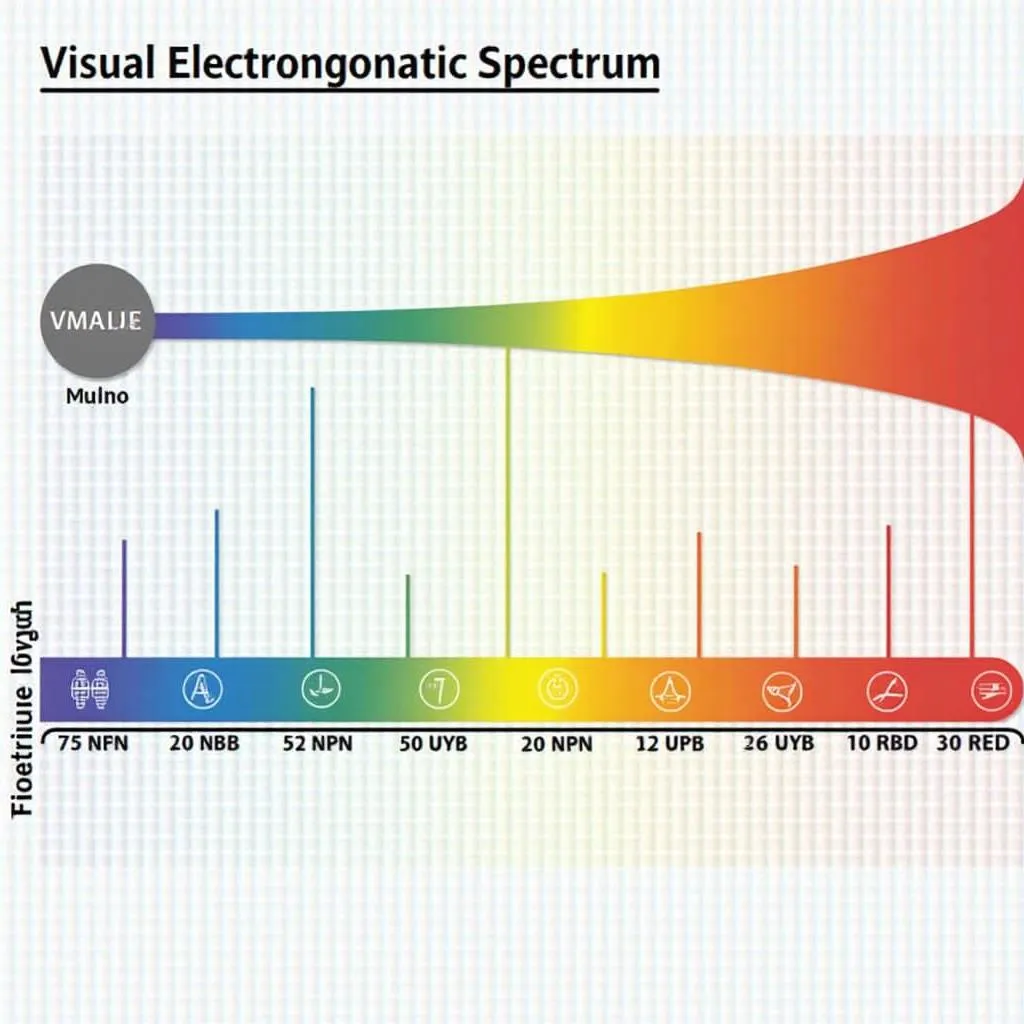We perceive the world around us as a vibrant tapestry of colors. But have you ever stopped to wonder about the science behind these hues? A fascinating aspect of color is the concept of wavelengths, and understanding which color of light has the longest wavelength can unlock a deeper appreciation for the spectrum we see.
Unveiling the Electromagnetic Spectrum
Light is a form of electromagnetic radiation, and like all radiation, it travels in waves. These waves vary in length, and this variation is what gives us the electromagnetic spectrum. At one end of this spectrum, we have radio waves with the longest wavelengths, and at the other end, we have gamma rays with the shortest wavelengths. Visible light, the portion of the spectrum our eyes can perceive, occupies a narrow band in between.
Red: The King of Wavelengths
Within the visible light spectrum, each color corresponds to a specific range of wavelengths. Red light has the longest wavelength, ranging from approximately 620 to 750 nanometers. To put this into perspective, a nanometer is one billionth of a meter! As we move down the spectrum, wavelengths gradually shorten, with orange, yellow, green, blue, indigo, and finally violet having the shortest wavelength in the visible range.
 Electromagnetic Spectrum
Electromagnetic Spectrum
Why is Wavelength Important?
The wavelength of light determines its properties and how it interacts with matter. For example, red light, with its longer wavelength, is less easily scattered by particles in the atmosphere. This is why we see vibrant red sunsets—the longer wavelengths of red light are able to penetrate the atmosphere more effectively when the sun is low on the horizon.
 Sunset with Red Hues
Sunset with Red Hues
On the other hand, blue light, with its shorter wavelength, is more readily scattered. This explains why the sky appears blue during the day—the shorter wavelengths of blue light are scattered in all directions by the tiny particles in the atmosphere.
Beyond the Visible: Infrared and Beyond
While red light holds the title for the longest wavelength in the visible spectrum, it’s essential to remember that the electromagnetic spectrum extends far beyond what our eyes can see. Infrared radiation, with wavelengths longer than red light, is invisible to us but is responsible for the heat we feel from the sun.
Color, Wavelengths, and Our World
Understanding the concept of wavelengths and which color of light has the longest wavelength allows us to explain a range of phenomena, from the colors we see in the sky to the technology behind remote controls (which often use infrared light). It highlights the fascinating interplay between physics and perception, reminding us that there’s more to color than meets the eye.
Expert Insight:
“Many people are surprised to learn that what we perceive as color is directly related to the wavelength of light,” says Dr. Emily Carter, a physicist specializing in optics. “It’s a beautiful example of how physics shapes our everyday experience.”
Conclusion
So, the next time you admire a fiery sunset or gaze up at the blue sky, remember the unseen world of wavelengths at play. Red light, with its longer wavelength, reigns supreme in the visible spectrum, while beyond our perception, a world of longer wavelengths continues to shape our universe.
FAQs
- What is the relationship between frequency and wavelength?
- Frequency and wavelength are inversely proportional. This means that longer wavelengths correspond to lower frequencies, and shorter wavelengths correspond to higher frequencies.
- Why can’t we see other types of electromagnetic radiation?
- Our eyes are only sensitive to a narrow band of the electromagnetic spectrum, which we call visible light. Other types of radiation, like ultraviolet or X-rays, have wavelengths that are either too short or too long for our eyes to detect.
Do you want to delve deeper into the world of color and light? Learn more about which color has the lowest frequency or explore the fascinating effects of what color leds help you sleep.
Need help creating a space that reflects your unique style and personality? Contact Color Box Hanoi today at 0373298888 or email us at [email protected]. Our team of color experts is here to guide you every step of the way! You can also visit our showroom at 86 Cầu Giấy, Hà Nội, for personalized consultations and expert advice. We’re available 24/7 to answer your questions and help you bring your vision to life.

